Free download: Top 10 Natural & Easy Remedies for Joint Pain from Home. Learn these helpful remedies.
Estimated Reading Time: 7 minutes read
Looking for a way to prevent knee pain and swelling? Knee compression sleeves are an effective way to reduce the risk while also providing relief for those who already suffer from these problems.
They can be used by anyone! But before you decide if they’re right for you, there are a few things that you should know.
In this blog post, we’ll go over how to use these sleeves correctly and what benefits they offer. You may even find that it’s a good time to try or replace your old knee compression sleeves!
Table of Contents
Compression Sleeves Can Do More than You Think
It’s easy to think of knee compression sleeves as just a way to reduce pain and swelling or prevent injuries, but they actually do more than this.
They are primarily used to provide relief for people who suffer from any of the conditions listed below:
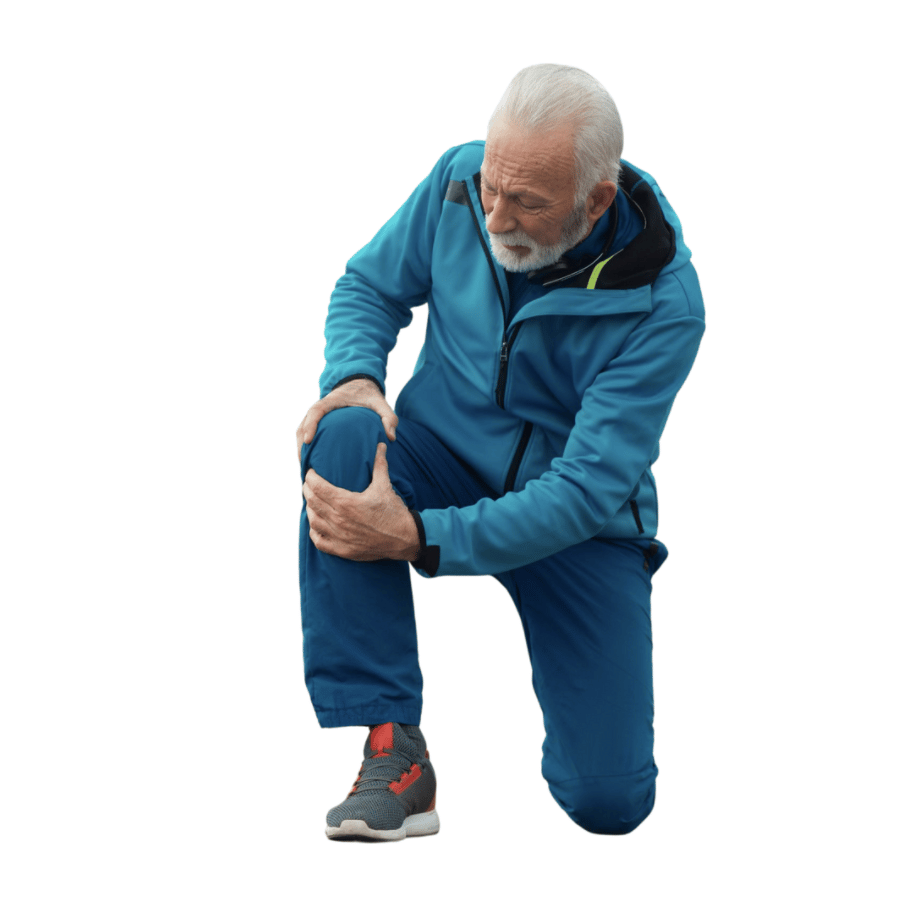
- Knee Pain
- Osteoarthritis
- Patellofemoral Pain Syndrome
- Swelling and Inflammation
- Meniscus Tear
- General Undiagnosed Knee Pain
- Previous knee Injury
Who Can Wear Them?
There’s a huge range of people who wear this type of sleeve for one reason or another; even those who don’t currently have injured
knees can benefit.
Seniors who experience swelling, inflammation, and general undiagnosed knee pain may find relief when wearing these sleeves.
Sleeves can also be used when you aren’t already suffering from pain or swelling.
They can be worn as a safety measure to prevent future knee problems.
If you have concerns about circulation, speak to your doctor. You should also be cautious about covering an open wound or scab with a sleeve.

What Are Knee Compression Sleeves Actually Made of?
Knee compression sleeves can be made out of lots of different materials, but there are two main types: Lycra and Neoprene.
Lycra is generally considered to be more comfortable than neoprene, and it also offers the benefit of being able to stretch with your movement. That said, it might be worth trying both in order to find your perfect fit.
One of the things people like about these knee sleeves is how comfortable they are. They don’t feel bulky and they give you a better range of motion, because there’s no loose material tugging on them.
Sleeves vs Braces: Which One is Better for You?
The primary difference is in the construction. While compression sleeves are typically fabric and lycra, braces are made of a metal with elastic at the back that is applied to your calf.
Some people prefer braces because they don’t slip or roll down when you’re wearing them. The downside is that they can occasionally feel uncomfortable if you aren’t used to them.
Sleeves as well as braces offer great relief for common knee problems. The key is finding what works best for you.
3 Simple Steps to Finding The Perfect Pair Of Knee Compression Sleeves
There are 3 simple steps to finding the perfect pair of knee compression sleeves:
- First, measure the circumference of your thigh 4.5 inches above the top of your knee. If you’re in between two sizes, try the smaller size in order to ensure the most comfortable compression level possible.
- When wearing the sleeves, be sure they are snug but not tight. This step is important so that you don’t find yourself with an uncomfortable gap or too tight of compression.
- Try them out with a recreational activity and check to see that you can do the following: Move Freely, Feel Supported, Reduce Pain.
Use the chart shown below to find perfect pair of the knee compression sleeves.
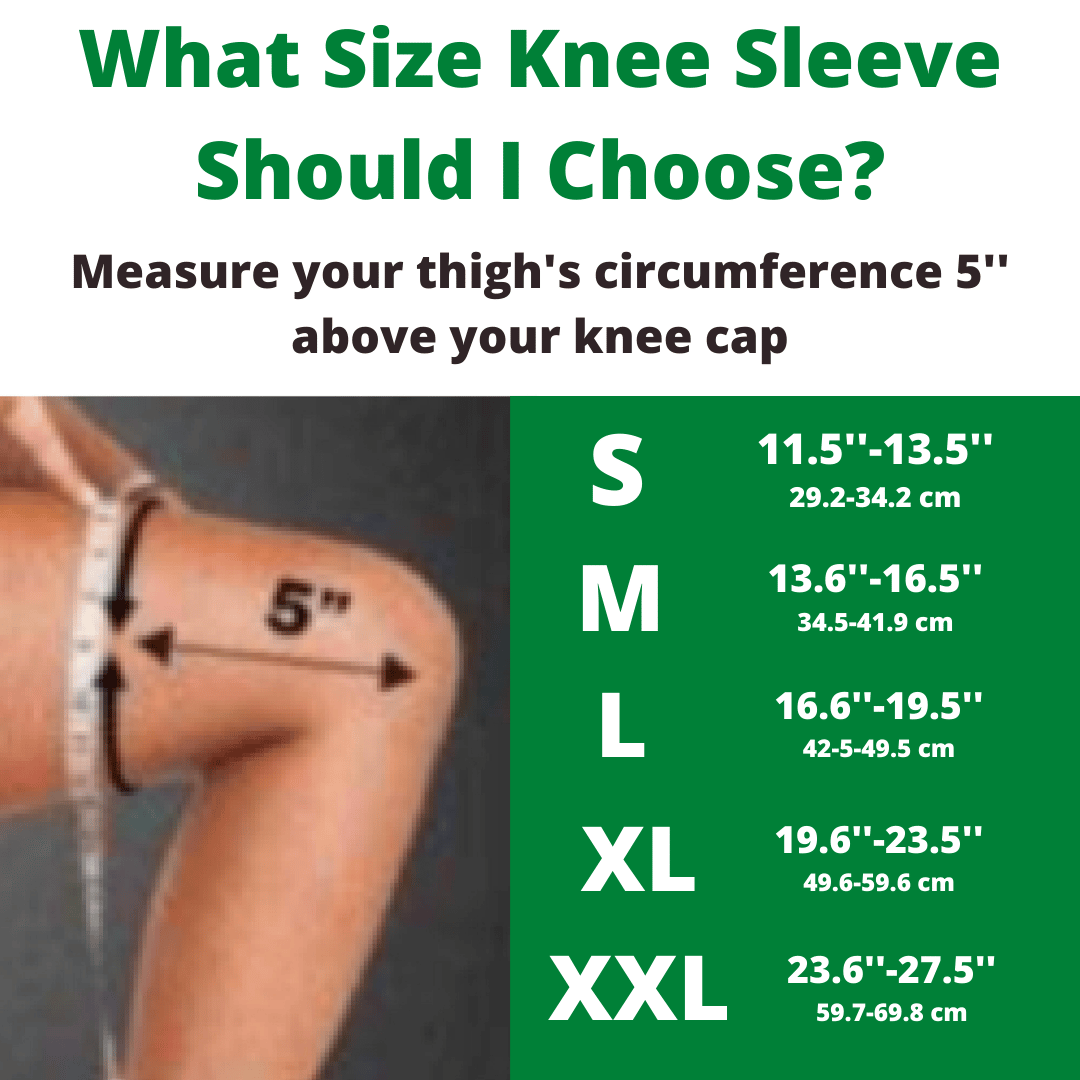
How to Properly Put on Knee Compression Sleeves
Place the sleeve on your leg with the bottom sliding over your kneecap. Don’t worry about stretching it out. Pull it up as close to your thigh as possible.
The bottom should be just below the cap of your knee joint and it shouldn’t feel too tight. Depending on the size of your leg, you may need to adjust the sleeve for the best fit.
Your main goal in wearing knee compression sleeves is comfort and pain relief. If your sleeve is too tight and you’re experiencing pain, take it off immediately. You’re not accomplishing the goal if they’re causing more problems!
Top 5 Signs Your Knee Compression Sleeves Are the Wrong Size
Below are five signs your compression sleeves are the wrong fit:
- You find the sleeves uncomfortable because they’re too tight or cutting off circulation, and they’re causing more pain than before you put them on.
- The sleeves roll down your leg or the fabric is bunching up in strange places.
- They make your legs itch or feel hot.
- It feels like the sleeves are compressing one leg more than the other.
- If your compression sleeves don’t seem to be effective at reducing the swelling in your legs, it might be because you’re not wearing the correct size or level of compression.
Compression Sleeves Can Change Your Knee Health

If you’re constantly struggling with knee pain, compression sleeves might be a good option for you. While a comprehensive recovery plan may be needed for certain types of injuries, compression sleeves can help ease the pain.
As mentioned, compression sleeves even aid in relieving soreness caused by arthritis or other chronic conditions. The right sleeves can do wonders for anyone who wants to avoid chronic knee pain and discomfort.
Research shows that there are many benefits to wearing these types of products:
- Improve blood circulation in the lower legs.
- Provides warmth.
- Prevents injury when playing high impact games.
- Provides stabilization.
- Allows you to be more active without pain.
- Good for psychosocial health.
The best thing about compression sleeves is that they don’t come with any serious side effects like some pills! It’s definitely worth a shot.
3 Things Knee Sleeves Aren’t Good For
Don’t use compression sleeves for any of the following situations:
- Knee sleeves aren’t good for sports that require a lot of lateral movement, such as soccer.
- Knee sleeves are not appropriate when you have an injury in the lower extremity and/or significant joint instability. In those cases, they can cause more harm than good.
- Even the right pair of knee compression sleeves are not good for people with very sensitive skin. The fabric may irritate the skin and cause more problems.
While knee sleeves can help with pain, it’s still critical to keep up with balance exercises. Don’t rely on a sleeve alone to solve all your knee problems.
Knee Compression Sleeves: Dangerous or Not?

Knee compression sleeves are typically made from high-grade nylon and provide warmth for your knee. They also provide stability, elasticity, and compression to the joint on which they are worn. And better yet, they can be worn for many hours before washing them.
Compression sleeves are not as dangerous or harmful as people sometimes think they are, so don’t stress.
Side effects of knee compression sleeves are very rare. Skin irritation is possible; monitor your skin closely if you have sensitive skin and wear these types of products often.
Some other minor side effect may include:
- Skin Irritation.
- Restriction of blood flow if compression sleeves are too tight.
One of the most common questions people ask is whether they can sleep in a knee compression sleeve. The answer is NO! Sleeves should not be worn overnight.
Tips For Taking Care of Knee Compression Sleeves
In order to take care of your knee compression sleeve, it is important to wash them periodically.
Air dry the sleeves for best results, as it keeps them from shrinking and maintains elasticity. And store them in a cool, shady place when you’re not using them.
We Support Your Knees With Our Buy 1 Get 1 FREE Offer
We’re proud to provide a Buy 1 Get 1 FREE offer on our new Feel Good Life Knee Compression Sleeves for knee relief. Click below to see how you can purchase one today.
Buy 1 Get 1 FREE on Our New Feel Good Life Knee Compression Sleeves for Knee Relief <=





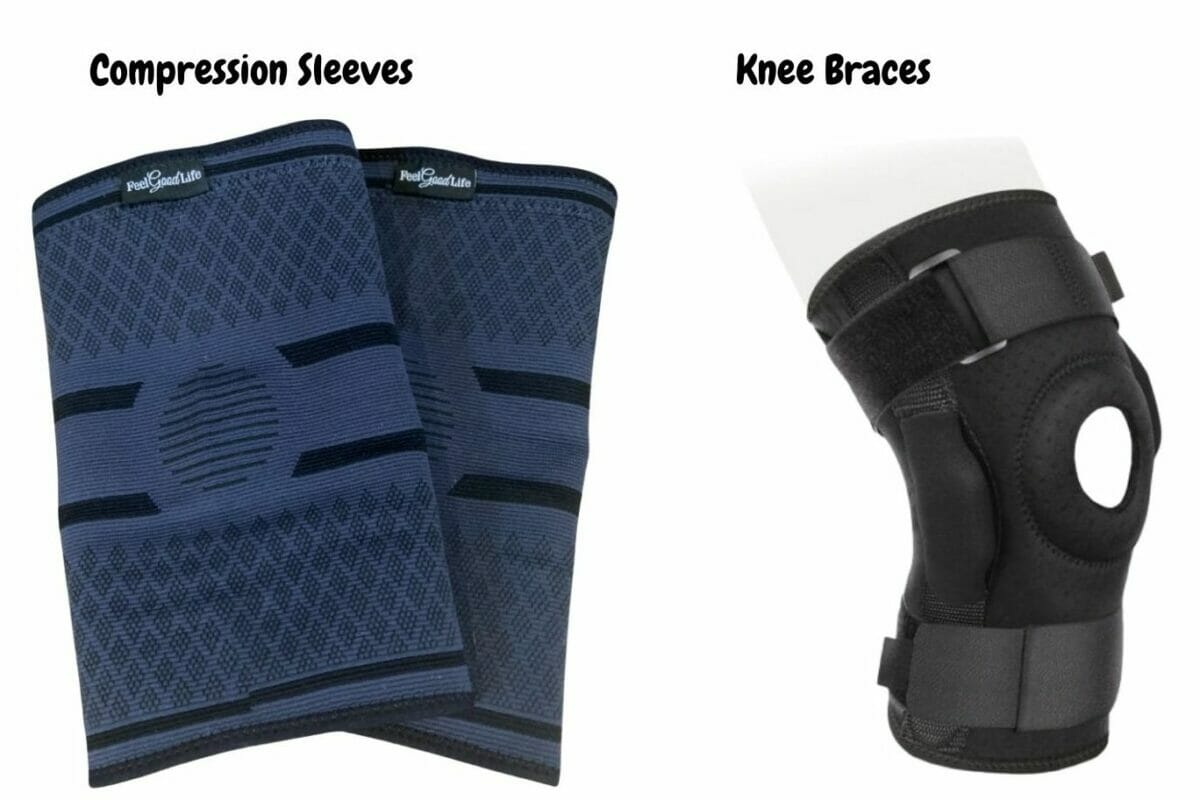


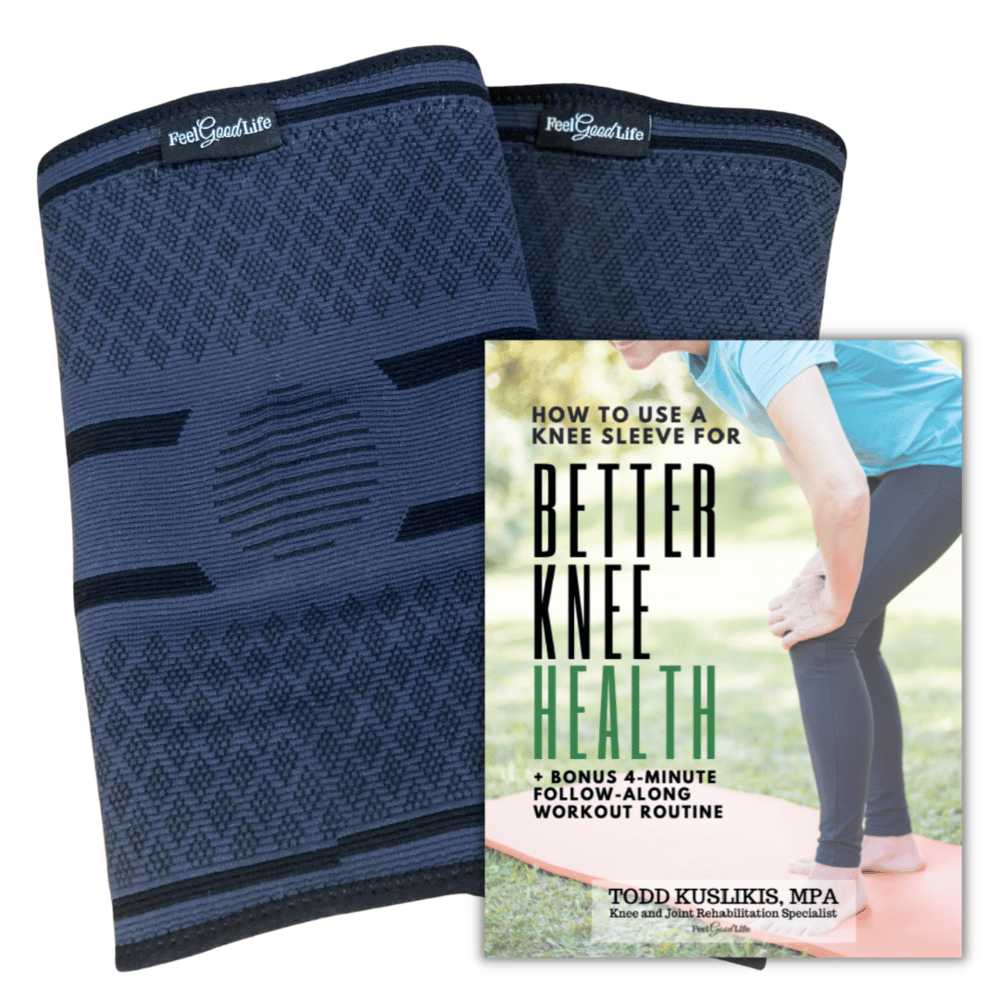


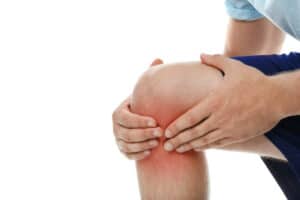
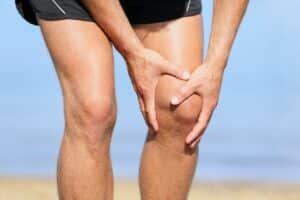


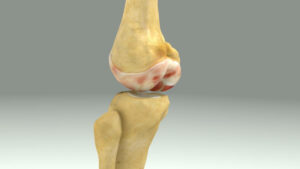

2 Responses
If I order the sleeves and they don’t fit right or hurt, can they be returned?
Yes, absolutely!